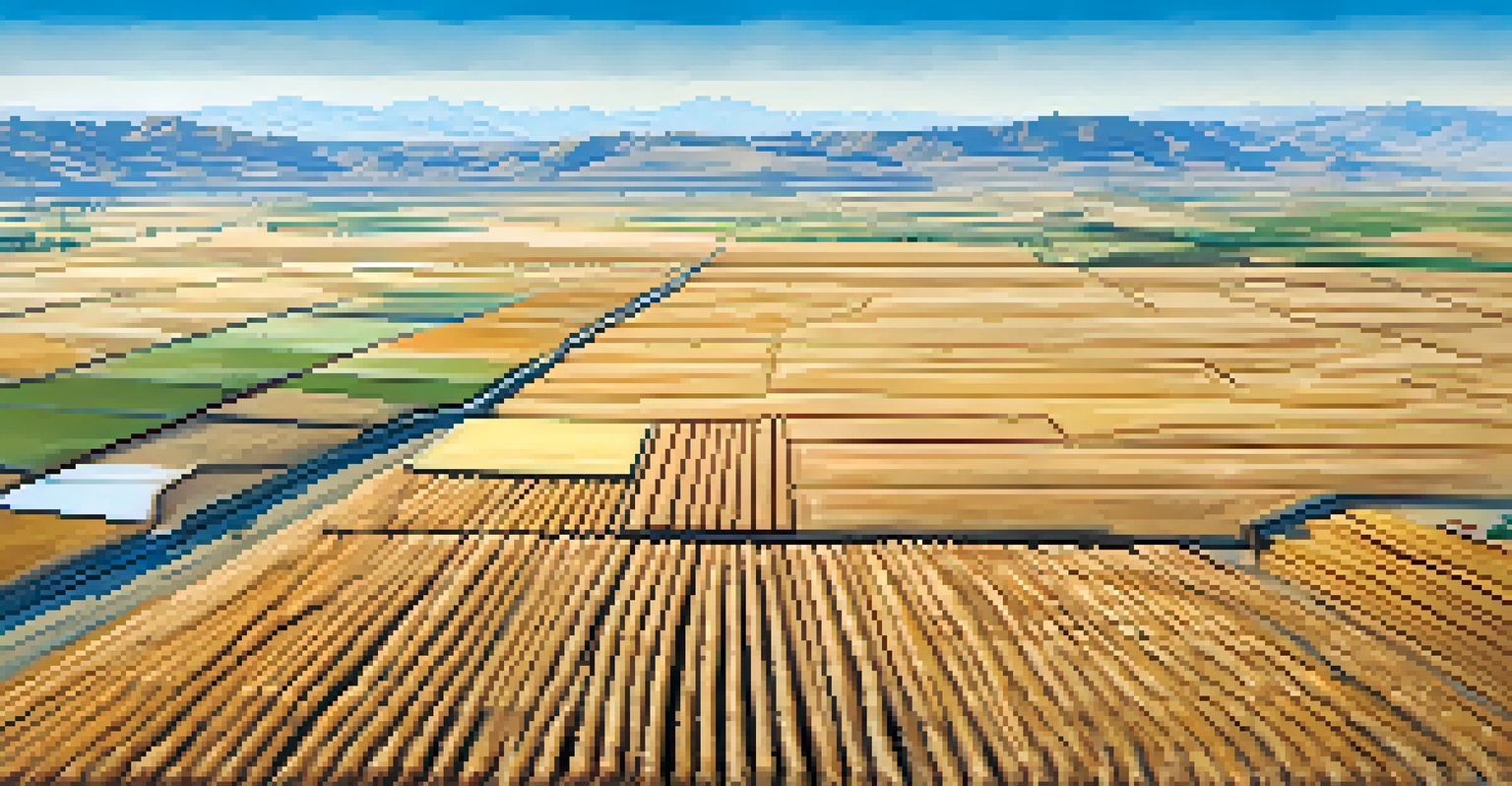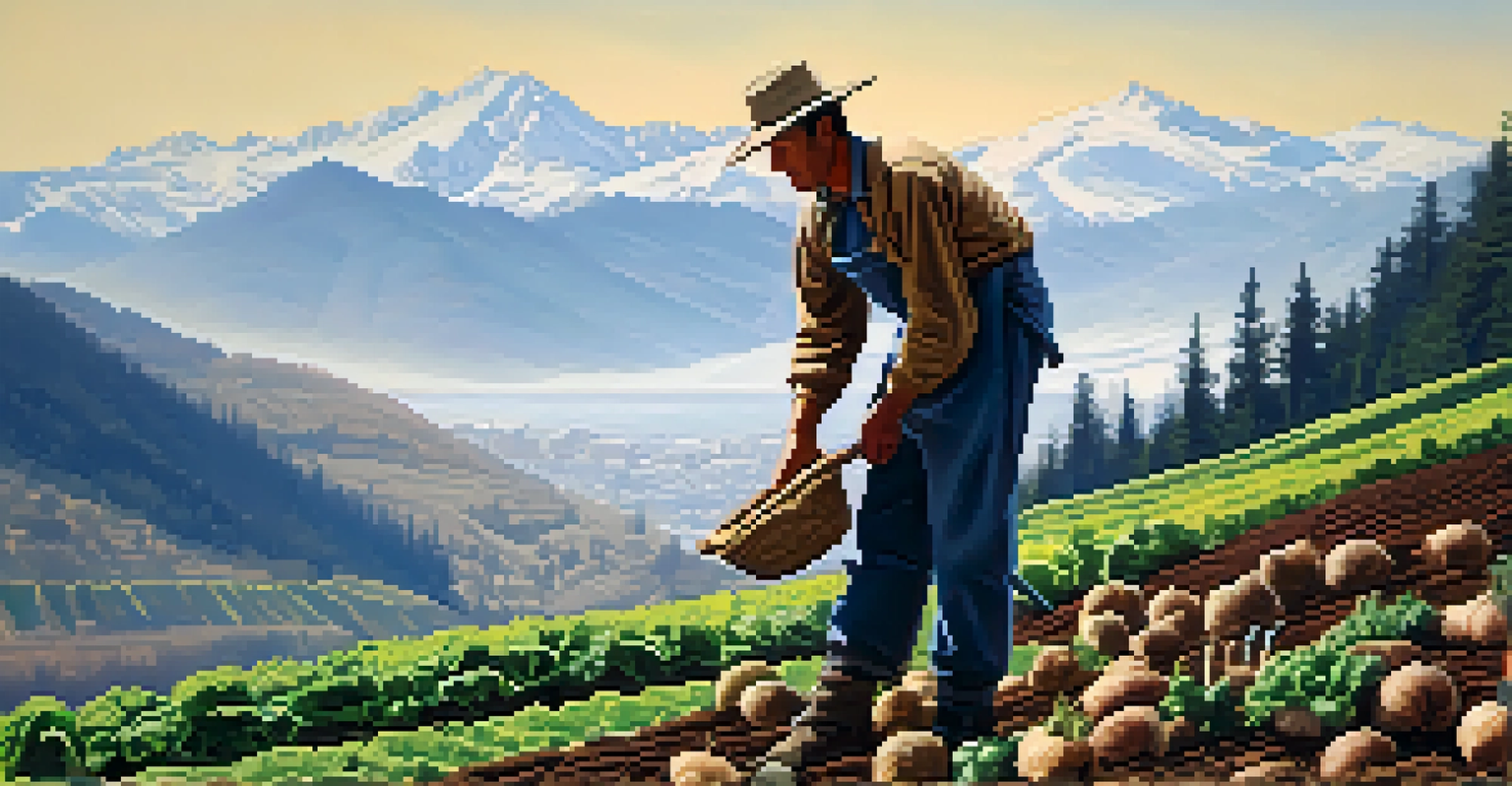Understanding Climate Zones in Washington State for Farmers

What Are Climate Zones and Why Do They Matter?
Climate zones are regions classified by distinct weather patterns, temperature, and precipitation. For farmers, understanding these zones is crucial, as they directly impact the types of crops that can thrive in a given area. In Washington State, where conditions can vary dramatically from the coast to the mountains, knowing your climate zone can help you make informed decisions about planting and harvesting.
The best time to plant a tree was twenty years ago. The second best time is now.
For instance, the USDA Plant Hardiness Zone Map is a helpful tool that divides regions based on average minimum winter temperatures. This means that a farmer in the warm coastal zone can grow different crops compared to one in the cooler mountainous regions. Understanding these variations can lead to better crop selection and yield.
Additionally, being aware of your climate zone helps in planning for seasonal changes. This knowledge allows farmers to optimize their planting schedules and make adjustments as needed, ensuring they take full advantage of the growing season.
Overview of Washington State's Climate Zones
Washington State features a diverse range of climate zones, primarily influenced by its geography. From the coastal regions characterized by mild, wet winters to the dry and warm eastern parts of the state, each zone presents unique opportunities and challenges for farmers. The two main climatic influences are the Pacific Ocean and the Cascade Mountain Range, which create distinct weather patterns.

In the western part of the state, the climate is typically classified as Mediterranean, fostering lush vegetation and ideal conditions for crops like berries and grapes. Meanwhile, the eastern regions experience a semi-arid climate, perfect for growing wheat and other grains. This stark contrast emphasizes the importance of understanding local climate conditions for successful farming.
Understanding Climate Zones is Key
Knowledge of climate zones helps farmers make informed decisions about crop selection and optimize their agricultural practices.
Farmers in Washington must adapt their practices to these varying climates. By recognizing the specific needs of their region, they can enhance their productivity and sustainability, ensuring a thriving agricultural sector across the state.
The Coastal Climate Zone: Benefits and Challenges
The coastal climate zone in Washington is known for its mild temperatures and abundant rainfall. This environment is particularly favorable for crops such as apples, cherries, and various vegetables that thrive in cooler, moist conditions. The long growing season in this zone allows farmers to produce multiple harvests each year, maximizing their output.
In every walk with nature, one receives far more than he seeks.
However, the lush conditions also come with challenges, including the risk of mold and pests that thrive in humid environments. Farmers must be proactive in managing their crops, implementing strategies such as crop rotation and integrated pest management to mitigate these risks. Understanding the nuances of the coastal climate can make a significant difference in a farmer's success.
Additionally, coastal farmers need to stay informed about changing weather patterns and climate change impacts. Increased rainfall and temperature fluctuations can affect crop yields, making it essential to adapt and innovate continually.
The Eastern Washington Climate Zone: A Different Landscape
In stark contrast to the coastal region, Eastern Washington boasts a semi-arid climate characterized by hot, dry summers and cold winters. This zone is known for its agricultural output, particularly in crops like wheat, barley, and hops, which thrive in the drier conditions. Farmers here are adept at using irrigation techniques to maximize their yields despite the lower rainfall.
The challenge for Eastern Washington farmers lies in managing water resources effectively. With less rainfall, they must be strategic about irrigation, often relying on technologies such as drip irrigation to conserve water and ensure their crops receive adequate moisture. Understanding the climate's demands is crucial for maintaining a sustainable farming operation.
Diverse Conditions Across Washington
Washington's varied climate zones—from coastal to mountainous—offer unique farming opportunities and challenges that require tailored approaches.
Moreover, the hotter summers can lead to increased weed pressure and heat stress on crops. Farmers must remain vigilant and adapt their practices to meet these challenges, ensuring they can continue to produce high-quality crops in this unique climate zone.
The Mountain Climate Zone: Unique Farming Conditions
The mountain climate zone in Washington presents a unique set of challenges and opportunities for farmers. With cooler temperatures and higher elevations, this zone supports different types of agriculture, primarily focused on hardy crops like root vegetables and certain grains. The shorter growing season here means farmers must be strategic in selecting crops that can thrive in limited timeframes.
Additionally, the mountainous terrain can affect farming practices, as fields may be less accessible for traditional farming equipment. Farmers in this zone often utilize innovative techniques such as terracing to maximize their arable land and prevent soil erosion. Understanding the specific microclimates within mountainous regions is essential for successful farming.
Farmers in the mountain climate zone must also be prepared for sudden weather changes, including frost and snow, which can occur even in summer. Building resilience into their farming practices is key to thriving in this unpredictable environment.
Strategies for Farmers to Adapt to Climate Zones
To thrive in Washington's diverse climate zones, farmers must adopt adaptive strategies tailored to their specific regions. This can include selecting crop varieties that are well-suited for their climate and utilizing sustainable farming practices that promote soil health and water conservation. By doing so, they can enhance their resilience against climate variability.
Crop rotation and diversification are essential strategies that can help mitigate risks associated with climate change. For example, planting a mix of drought-resistant crops in Eastern Washington can safeguard against dry spells, while incorporating pest-resistant varieties in the coastal zone can minimize crop losses due to pests.
Collaboration Enhances Farming Success
Building a strong community among farmers fosters knowledge sharing and collaboration, leading to better adaptation strategies against climate challenges.
Moreover, staying informed about evolving climate data and trends is critical. Farmers can benefit from engaging with local agricultural extension services, which provide valuable resources and insights into best practices tailored to each climate zone.
The Importance of Community and Collaboration
Building a strong community among farmers in different climate zones can foster collaboration and knowledge sharing. Participating in local agricultural groups and attending workshops can provide invaluable insights into how others are adapting their practices to changing conditions. This sense of community can also lead to collective efforts in addressing challenges like pest outbreaks or water scarcity.
Additionally, collaboration with research institutions can help farmers access the latest technologies and farming techniques. Through partnerships, farmers can gain valuable data on climate impacts and innovative solutions tailored to their specific needs. This collective approach can lead to more sustainable farming practices across the state.

Ultimately, understanding and adapting to climate zones is not just about individual success; it's about creating a resilient agricultural community that can thrive even in the face of challenges posed by climate change.
Conclusion: Embracing the Diversity of Washington's Climate Zones
In conclusion, understanding the various climate zones in Washington State is essential for farmers looking to optimize their agricultural practices. Each zone offers unique benefits and challenges, and by embracing this diversity, farmers can make informed decisions about crop selection and management. Whether in the lush coastal areas, the dry eastern plains, or the rugged mountains, there's a wealth of opportunities waiting to be harnessed.
As climate change continues to impact weather patterns, staying adaptable and informed will be key to maintaining a successful farming operation. By utilizing effective strategies and fostering community collaboration, farmers can navigate the complexities of their climate zones with confidence.
In essence, knowledge is power. By understanding the intricacies of Washington's climate zones, farmers can cultivate not just crops but a sustainable future for themselves and their communities.